ClickUp Explores: A Day in the Life of an IT Manager

Sorry, there were no results found for “”
Sorry, there were no results found for “”
Sorry, there were no results found for “”
When a server glitch causes your systems to act possessed by poltergeists—who you gonna call?
The IT manager, of course!
If you’re in the industry, you probably know this role is a critical one. IT managers are typically involved in most of the organization’s decisions and operations. They’re responsible for meeting the customers’, the employees’, and the company’s needs.
Equipped with extensive technical expertise and problem-solving skills, IT managers can combat any issue haunting the IT infrastructure, no matter how scary. 👻
In celebration of IT managers around the world, let’s dive deeper into the intricacies of this position. We’ll describe a typical day in the life of an IT manager, explore the tech they rely on, and analyze how the industry they’re involved in can alter their duties.
While they may seem similar and share some responsibilities, the roles of IT managers and IT directors differ significantly.
The IT project manager has a more practical role and focuses on the day-to-day. Their primary responsibility is to manage tasks and staff members and maintain infrastructure. While they’re often involved in decision making, their influence on upper-level organizational goals is limited.
The IT Director has a more robust business acumen and they influence the strategic planning of the organization’s IT department. Working with C-level executives and other department heads, they help align overall business objectives with the IT department’s specific goals.
IT Directors collaborate with IT managers to implement the strategies and assess user needs to inform future decisions.
The role of an IT project manager can take many forms. Some managers are responsible for one department, while others act as middlemen between other departments and stakeholders. A handful of managers even serve as one-person IT departments, adopting the role of system administrators, software developers, and IT managers all at once. 🤹
Many managers start their career path as developers or tech support agents and gradually work their way up as they familiarize themselves with the industry. This experience and technical proficiency can make them more compassionate and hands-on leaders.
Besides expertise in computer science and information technology, the preferred qualities of IT managers include:
Pro tip: Even talented individuals who chose the right career path may need some help. An outstanding project management and productivity tool may be crucial to the manager’s success.
With ClickUp’s numerous features and customization options, managers can ensure smooth planning and operations across the department. Using ClickUp’s IT templates, they can reduce the learning curve and start leveraging the platform’s benefits quickly.
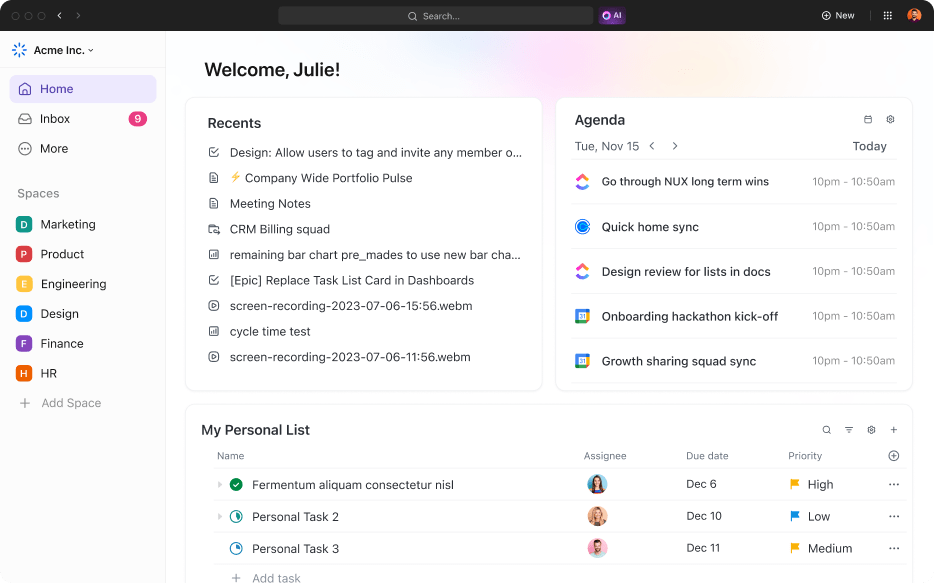
The responsibilities of IT managers vary from organization to organization and from day to day. They’re influenced by factors such as the project’s phase, emerging issues, and organizational shifts. In general, an IT manager’s daily itinerary may include the following types of work:
Considering the importance and impact of the role, IT managers must fully understand the work the company is doing and why it’s doing it. To make the right decisions, the manager must master the following:
IT managers are typically involved in both IT governance processes and lower-level planning. They work with executives and other key stakeholders to identify opportunities and potential bottlenecks, set goals, and design workflows. They recognize the main customer concerns, develop the most effective solutions, and oversee their implementation alongside the project manager.
In smaller companies, IT management may involve budgeting tasks, such as drafting funding requests, auditing the spending, and reporting to investors.
IT managers also help introduce innovation to the company. Together with stakeholders, they devise IT roadmaps for improvement and transformation initiatives. 🗺️
While planning is a crucial aspect of an IT manager’s job, sometimes it takes a back seat. When a major problem arises, it’s usually all hands on deck, so the manager needs to step in to help resolve it efficiently. This is why flexibility and expertise are such highly sought-after traits for the job.
Pro tip: ClickUp’s IT Managers Strategic Plan Template allows managers to create a comprehensive roadmap and easily align IT initiatives with the organization’s goals.

Besides working with higher-ups to define goals and strategies, IT managers need to turn them into actionable and trackable tasks and communicate these plans to their departments. They must ensure everyone is on the same page and has all the necessary information to tackle the task.
They typically communicate crucial information through meticulous IT documentation and regular meetings. The manager also needs to prepare for meetings beforehand to reduce time waste, figuring out how to present the information clearly and effectively.
Pro tip: Managers can use the simple ClickUp Agenda Template to outline the topics and goals for meetings. ClickUp Brain, the platform’s AI assistant and neural network, helps them craft the agenda and can also transcribe and summarize meetings.

Once the new project is underway, IT managers support the project manager and their team to facilitate cross-functional collaboration. It’s important to maintain balance—overseeing work without micromanaging it and guiding employees without doing all the work for them. ⚖️
As feedback, new information, or problems come up, the company’s goals and plans evolve, so IT managers must adapt and ensure everyone else adapts, too. They always need to have insight into the teams’ progress and performance, reporting this info back to the higher-ups or the clients.
A major factor influencing the product’s success is the people making it; the manager is responsible for hiring and overseeing those people. Because of that, they should follow a few healthy practices:
While employees can’t be 100% productive all the time, it’s the manager’s job to account for that and do what they can to ensure continuous progress. They act as a bridge between higher and lower levels of the organization and harmonize the company’s objectives with the capabilities, needs, and well-being of employees. 🌉
Pro tip: Coordinating staff members is more straightforward with ClickUp’s Resource Planning Template. It allows managers to assign work efficiently, ensure fair workloads, and stick to the project timelines.
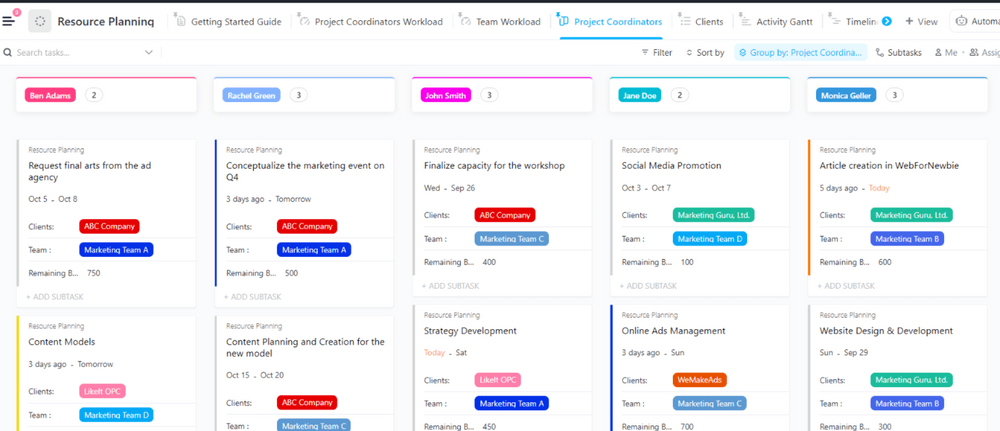
While not mandatory, a solid technological background gives the manager an upper hand. It allows them to be more connected to the product and the team building and maintaining it.
IT managers also play a role in implementing, maintaining, and optimizing the technology the company or team uses. This includes the infrastructure, network, hardware, and tools that help plan, execute, and oversee operations, such as development platforms, task management software, and ticketing software.
It’s also the IT manager’s responsibility to keep up with trends and developments in the tech world. They should observe and implement new tools that lead to higher efficiency and greater results. 🖥️
Unforeseen circumstances and plan changes are regular occurrences in an IT department. The manager’s role is to stay up-to-date, adapt to changes, and ensure all other parties adjust accordingly.
Read about some common priority shifts that IT managers face and how they face them:
Dave Anderson, a former Amazon senior development manager, shared that his duties were unpredictable and varied day-to-day.
He described a typical day:
While this is not typically his duty, he does it to ensure everything runs smoothly. Anderson explained that the manager’s job is to keep the team away from distractions and ensure their manager knows they’ve got it under control.
In a later meeting, he notices he is the only engineer in the group. He invites a coworker to join as their input is valuable, despite not being invited intentionally due to an interpersonal conflict with the product manager.
This situation highlights the importance of having a middleman who can stay focused on the end goal and coordinate work despite personal differences.
Side note—all of this happens before 9 am!
To illustrate how different industries can influence IT managers’ daily routines, we’ve explored two examples—product management and the event industry.
In the product management industry, IT managers must have a profound understanding of the product’s requirements and objectives. They can then help determine the optimal technology solutions to build the product. They collaborate with product managers and oversee the operations throughout the project’s lifecycle, ensuring they align with the broader goals. The manager’s role is also to ensure that the product meets compliance and security regulations.
Now let’s take a look at IT managers’ duties in the event management industry. Technological advancements have enabled event planners to execute events to perfection and give users a seamless registration experience, making the IT manager’s role pivotal.
IT managers coordinate operations so that both the planners and the attendees can be satisfied with the service. For example, their focus may be to streamline the ticketing system, secure payments and sensitive user information, and make sure data is synced so everyone is up-to-date.
If the company decides to implement live online events or even VR, the IT manager’s duty would be to ensure the technical infrastructure can support these changes and supervise their integration.
While IT management is a complex process, there are many tools to make the job less stressful and more efficient. 🛠️
Learn about the different types of tools IT managers and their teams typically use daily:
IT managers use various software for behind-the-scenes operations such as employee management, finances, and business analyst procedures. Some of them include:
Enterprise resource planning (ERP) software has many of these capabilities, allowing the company to manage daily business activities, including accounting, risk management, and procurement, within a centralized platform.
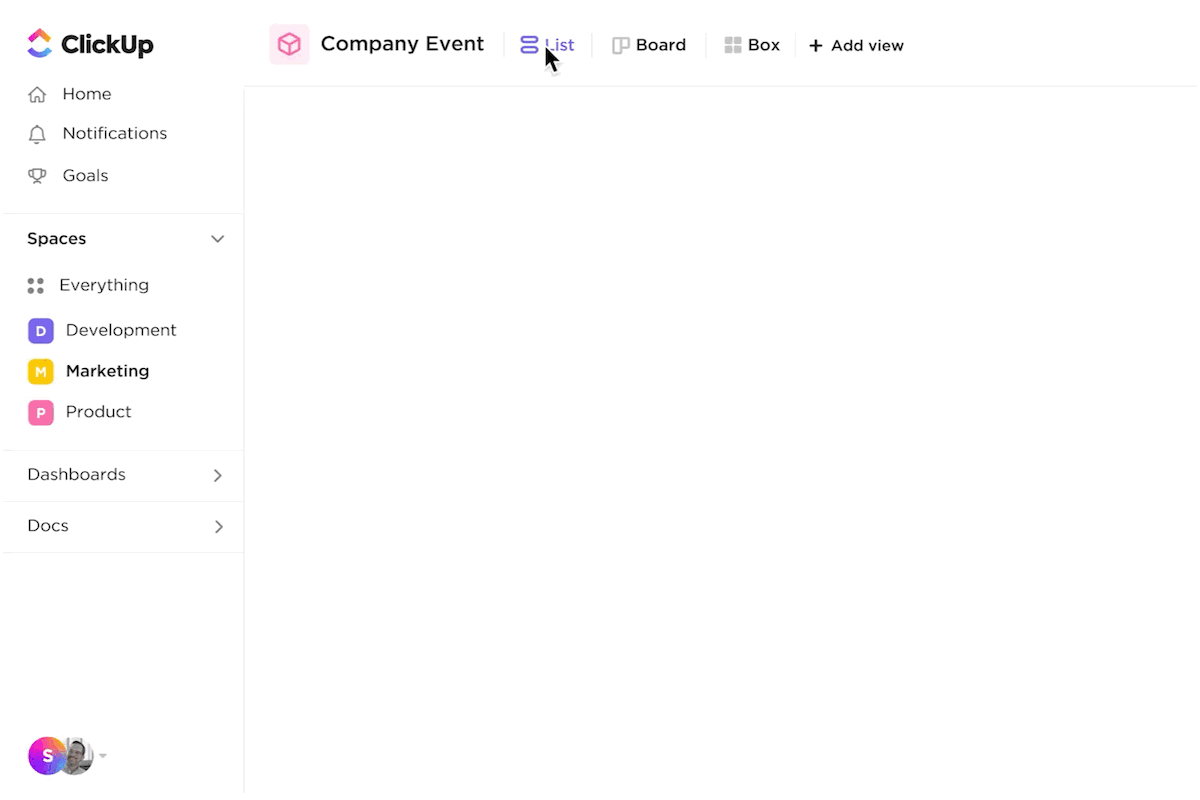
A project management tool like ClickUp is indispensable for IT management. It facilitates the planning and execution of projects, enabling managers to allocate resources efficiently and track progress. Project management tools are crucial for collaboration, setting deadlines, and adapting to emerging problems.
With ClickUp Tasks, you can easily assign, prioritize, and schedule measurable tasks in different viewing modes, including everyone’s favorite Kanban Board view. Team members can view the most up-to-date plans, gather information about tasks, and check tasks as they complete them. ✅
ClickUp Dashboards give you a high-level overview of working hours and company or team-wide progress. With over 50 cards to choose from, they’re highly customizable.

IT managers use the same development platforms their teams do. These platforms host the code and enable version control to ensure cohesion.
More common tools in the IT manager’s toolkit are user interface (UI) and idea management platforms, though. They streamline the product planning stage and enable collaboration.
Fun fact: ClickUp integrates with the most popular software development platforms, such as GitHub, GitLab, and BitBucket, as well as over 1,000 other tools.
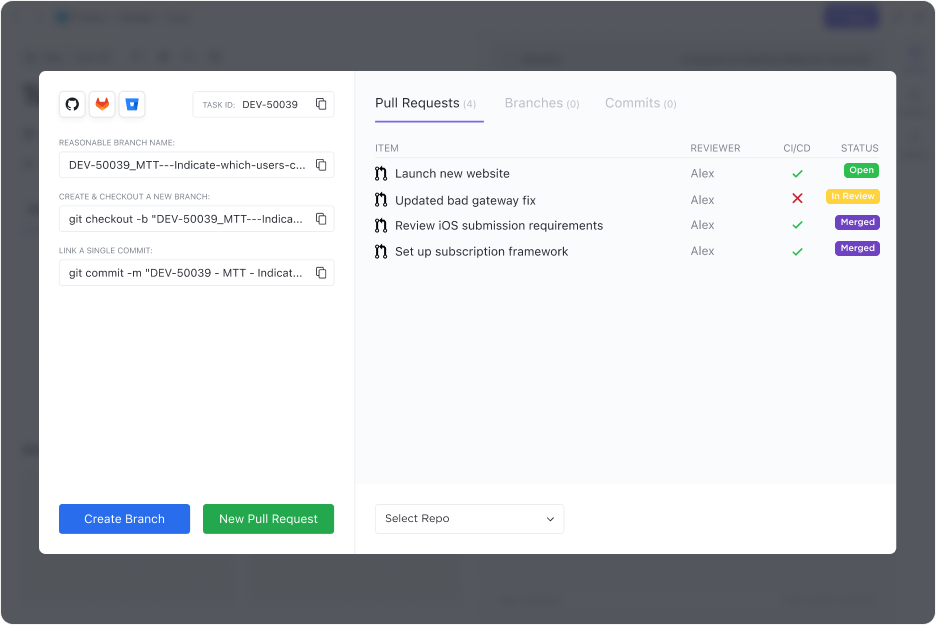
The backbone of most software products is a cloud computing platform, such as AWS and Azure. These services host the application and the databases, protect them, and allow them to be scaled.
IT managers use server load monitoring tools to gauge system performance, detect problems quickly, and prevent them from escalating. The IT team may also develop internal tools for their specific needs, such as custom solutions for task automation.
For internal communications, IT teams typically use messaging platforms like Slack. More notable and formal occasions usually call for video conferencing platforms like Zoom. You can access these platforms from one place, as ClickUp integrates with both Slack and Zoom for uninterrupted collaboration.
When it comes to customer interactions, a common choice is a Voice Over Internet Protocol (VoIP) service. It offers quicker and more personalized communication that drives engagement. 📞
If you use ClickUp, you can communicate via Chat view, comments, and integrated email to spare yourself from juggling multiple platforms. At the same time, ClickUp Whiteboards provide a visually appealing way to brainstorm collectively in real time.

Service desk software enables the manager to build forms and gather customer input, including bug reports and feature or service requests. This way, they can detect and resolve issues and meet customers’ needs quickly, ensuring their satisfaction and long-lasting collaboration.
You can do all this with the help of ClickUp’s Form view, which features an advanced form builder and allows you to distribute forms to customers. The platform can automatically turn responses into trackable tasks ready to be worked on or moved to the backlog.
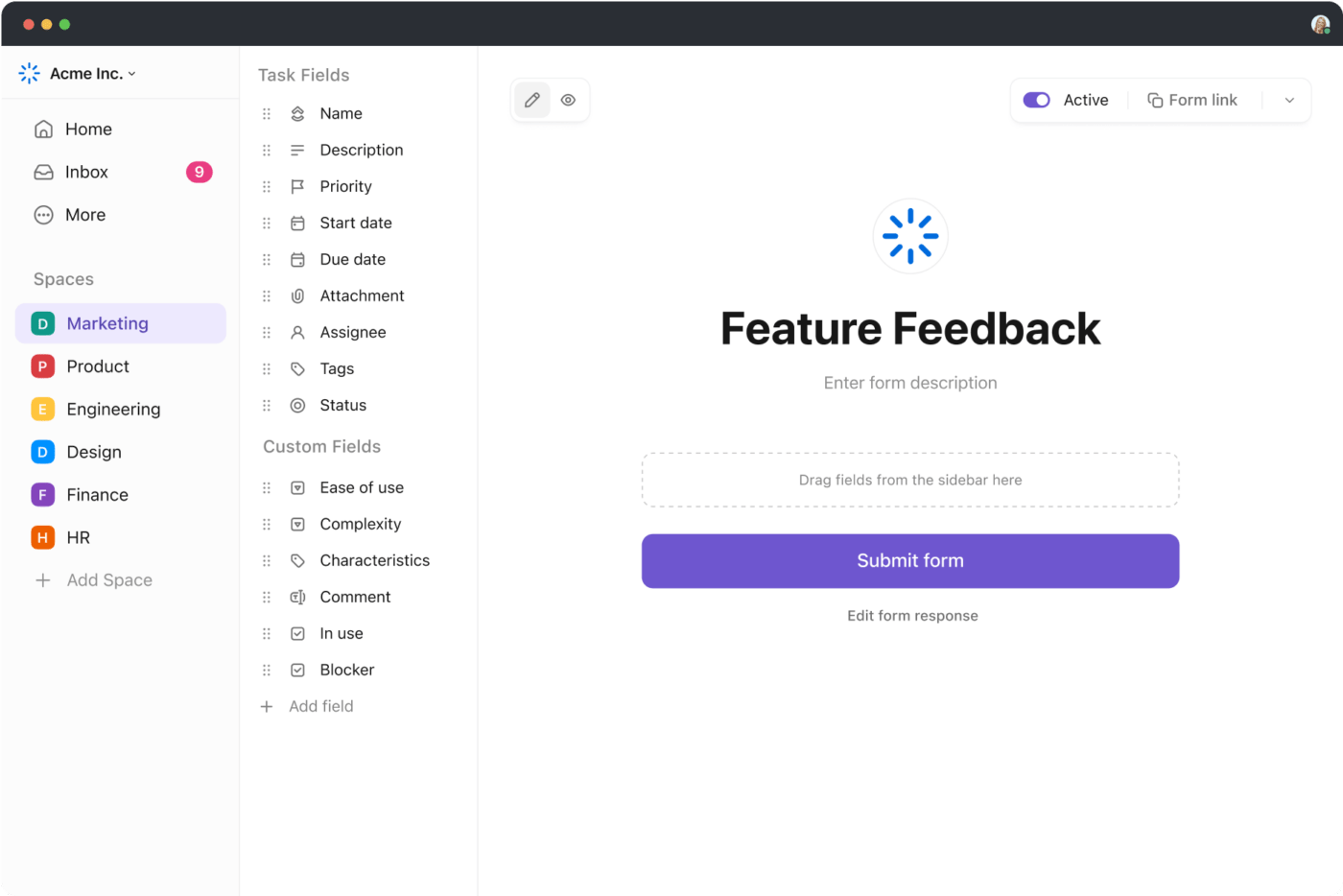
The meticulous and hard work IT managers take on can make or break an organization. They participate in critical decision making and ensure the seamless functioning of the information systems—all while balancing the needs of the senior management and employees.
A tool such as ClickUp allows you to manage all these complex processes under one roof, saving you and your team a lot of time and effort. You can then use these valuable resources to focus on what’s essential—providing the best product you can.
Sign up for ClickUp, leverage one of its many templates to get started quickly, and up your team’s productivity to the maximum! ☝️
© 2025 ClickUp